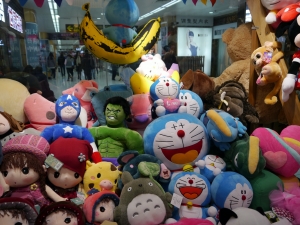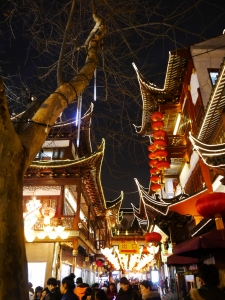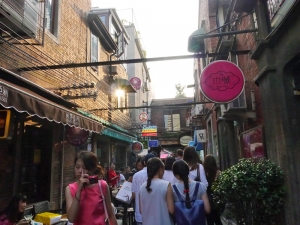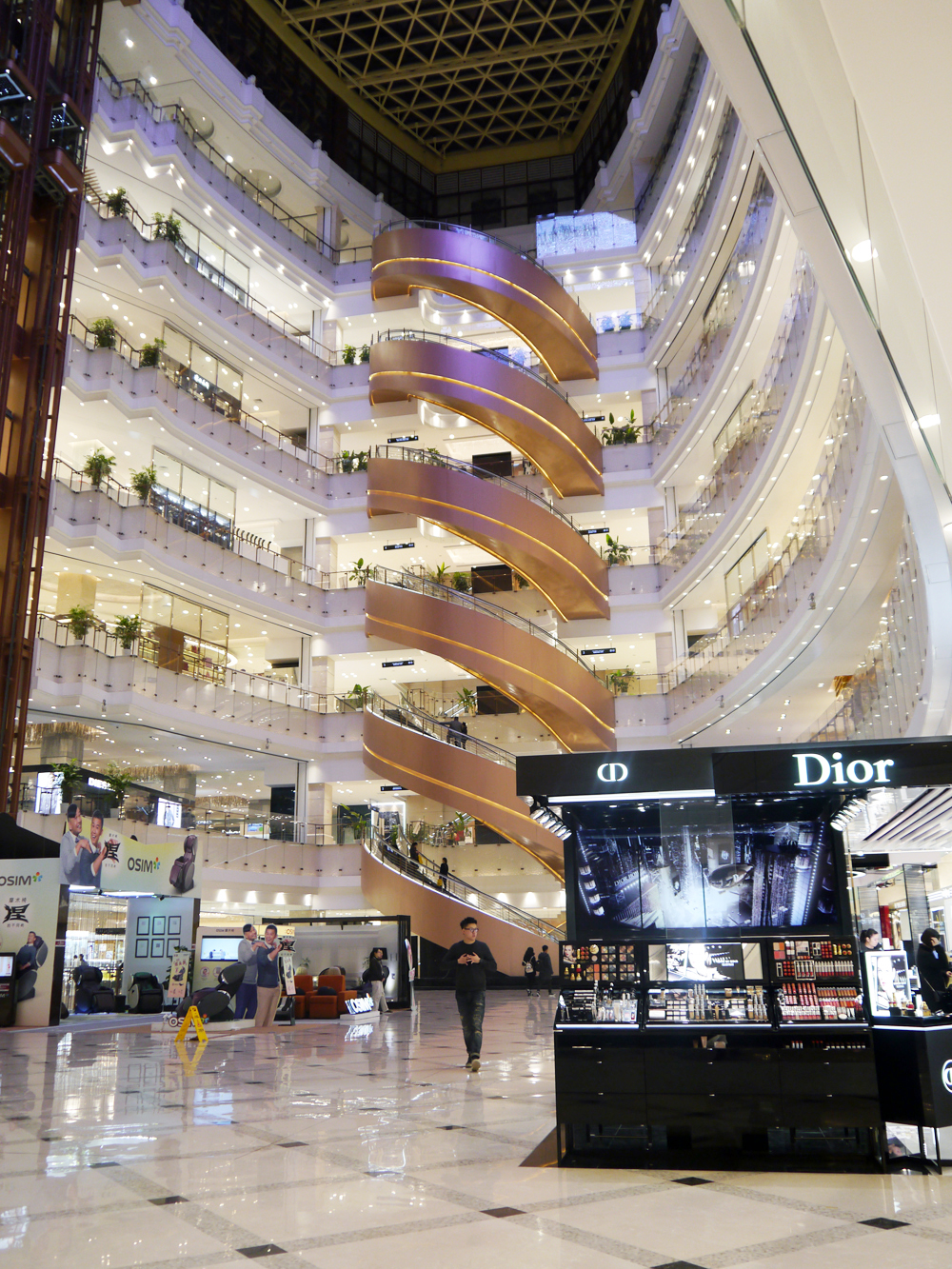By Anna-Maria Linhard, Teacher in Shanghai (2014-2016)
Shop till you drop in Shanghai
After having visited the palaces and temples in Beijing, the Chinese gardens in Suzhou, the Emperor’s tomb and terracotta army in Xi’an or the West Lake area in Hangzhou, Shanghai pales in comparison when it comes to traditional sight-seeing. Go to the Bund, Nanjing Road and maybe the French concession and you’re basically done. However, if you want to go shopping, Shanghai beats any other city on the mainland. I’m not joking when I say that a new shopping mall opens in Shanghai every week, but there are also many other types of shops and shopping experiences to be found here. For me shopping has always been more of a means to an end and I admit to shaking my head about shopaholics. In Shanghai I’ve learned that shopping is a hobby, a lifestyle, an art form even. I do think that Chinese people are the most passionate shoppers in the world. They are famous (or infamous) for periodically invading neighbouring countries for shopping sprees during Chinese holidays, and they have perfected the art of squeezing as many shopping bags as possible into any available space on airplanes and trains. Compared to that I am but a blundering novice in the art of shopping, but allow me to share my limited knowledge and present some insight into the how, where, what and when of shopping in Shanghai.
Picture above: Daimaru New World Mall
Malls
Shanghai boasts several of the world’s biggest shopping malls and in two years I didn’t manage to visit even half of them. Typically a Shanghai mall has between 6 and 12 floors and the bigger ones consist of several buildings as well. Often a big foreign supermarket like Carrefour along with cheaper restaurants can be found on the lower and basement levels. The top floor is usually occupied by a cinema complex. More expensive restaurants are located on the upper levels and in between there is anything from clothes and cosmetics to electronics and household articles. My favourite all-round mall is Cloud 9 (Chinese name: 龙之梦) next to Zhongshan Park station. It has everything from affordable clothes stores to amazing cake shops. For a slightly overwhelming luxury mall experience I recommend the opulent baroque/European style Global Harbour (环球港) for window shopping and food (next to Jinshajiang Road station). One of my favourite smaller malls is Metro City (美罗城) next to Xujiahui Station which is great for hanging out and getting some food with friends on the lower levels but not so good for actual shopping (lots of electronics). Honourable mentions to Daimaru New World on East Nanjing Road, a Japanese luxury mall with the world’s biggest spiral escalators, and Joy City next to Qufu Road Station with artsy themed floors and a Ferris wheel on the roof.
Street stalls and carts
A stark contrast to Shanghai’s malls, street stalls and carts pop up just about anywhere at any time but many of them not before the early evening. In the winter gloves and hats are sold at every corner and in the summer you can find rows of pretty and colourful parasols for the sun-fearing Chinese lady displayed on the pavement. Fruits and vegetables are often sold on the street as well and when you see carts with hundreds of big shiny water melons appear, it means summer is here. In the city centre and in the financial district in Pudong street vendors are a rarer sight, but where I live I can stock up on socks, flowers, scarves, toys and kitchen tools on the street. Street food, of course, deserves its own article.
Subway station shopping
Shopping in the underground bowels of Shanghai’s subway system was a new experience for me. Big maze-like underground shopping areas are attached to several Shanghai subway stations. Some of them consist of rows of neat little individual stores like a miniature mall (e.g. People’s Square around exits 5-9) whereas others have open stalls like a market (e.g. Tiantong Road station, exit 1). One of my favourite gift shops that sells the cutest things, the “Cranky Craftsman”, is located inside People’s Square station next to exit 9. But keep in mind that places in Shanghai change so quickly, a shop that was there last week might be gone tomorrow. Another station to check out is the Science and Technology Museum station which houses on of the biggest fake markets in Shanghai. Don’t forget to bargain!

The Cranky Craftsman
High street
If you are an expat missing the familiar European shopping experience, fear not. East Nanjing Road can offer you high-street style shopping with many familiar brands, such as a multi-floor H&M, Zara, Forever21, Bershka, Uniqlo from Japan and of course international luxury labels. If you start in the east and walk west on Nanjing Road towards Jingan Temple, the street gets quieter, less crowded with tourists and more upscale until there is nothing but Gucci and Armani. If you are tired of malls and huge stores go to the French concession (e.g. Changle Road) and find lots of little, charming boutiques although the vast majority are Chinese.

The Old Town during Lantern Festival
Souvenirs
Where to buy souvenirs is an important question for any long or short-term visitor. Let me present four different places. On East Nanjing Road near the Bund tourists can find shops crammed with mass-produced souvenirs. They often blast electronic music and have staff dressed in cheap costumes imitating old traditional Chinese clothes. If you need larger numbers of identical souvenirs that can be found anywhere in China, this is the place to go. Not too far away in an area called Old City (look for Yuyuan Garden) you can find the same souvenirs and more in a much nicer environment. The Old City contains some of the very few remaining ancient (but often renovated and new-looking) parts of Shanghai with the traditional Chinese architecture visitors expect but so rarely find in Shanghai. It’s very touristy but worth a visit, especially if you happen to be there during the Lantern Festival period. My favourite place for souvenir shopping and to hang out is Tianzifang, a maze of narrow alleyways in an old residential area in the French concession that was saved from demolition. The south entrance is just opposite exit 1 of Dapuqiao station. In the two years I’ve known the place it has changed a lot already. The little shops, boutiques, cafes and restaurants appear and disappear, change owners and names all the time. Finding “unique” souvenirs in Chinese cities is quite a challenge unless you can afford to buy real antiques, but in Tianzifang there is at least a chance. The last place I wanted to introduce has already disappeared as I just found out. For many years Dongtai Antiques Street was a very popular place to buy (fake) antiques and retro memorabilia from an open market but the entire neighbourhood has been swallowed by modernisation and redevelopment. The traditional Shikumen-style buildings have been demolished and the market established in the 80s is gone. It’s a sad reality that the old Shanghai is disappearing very fast.

Tianzifang
The Internet
The biggest place to go shopping in Shanghai or anywhere in China is…the internet. You might have to get help if you don’t speak/read Chinese to learn how to use some of the websites. Taobao is the Chinese version of eBay and so much more. If you don’t trust the private sellers on Taobao, there are many alternatives like Tmall or JD.com (more similar to Amazon). To pay for shopping online (and offline, too) I recommend signing up for Alipay or Wechat wallet, which basically turns your phone into a debit card.
Happy Shopping!
Ready to experience Shanghai for yourself? Check out our teaching programme.


Leave A Comment
You must be logged in to post a comment.